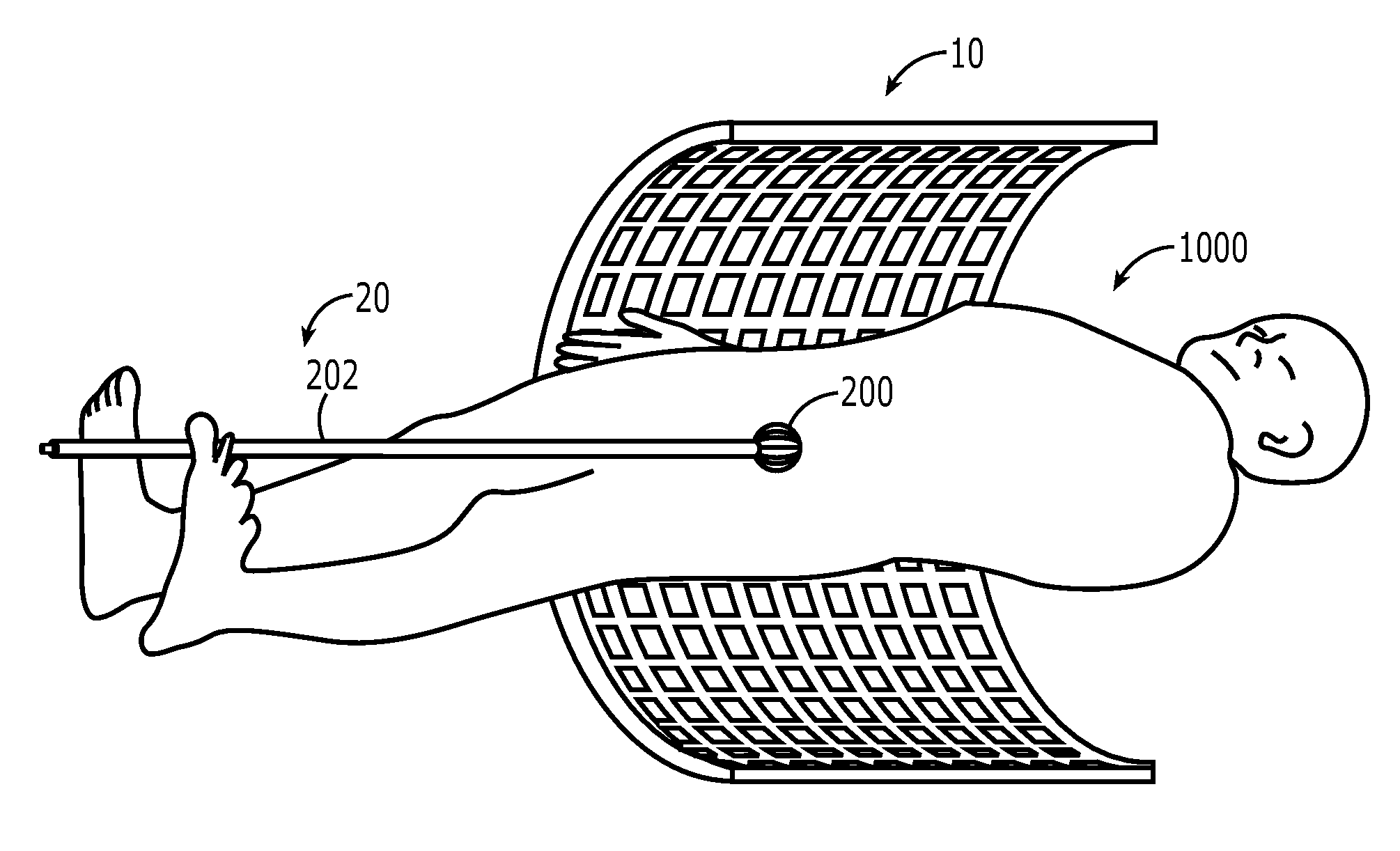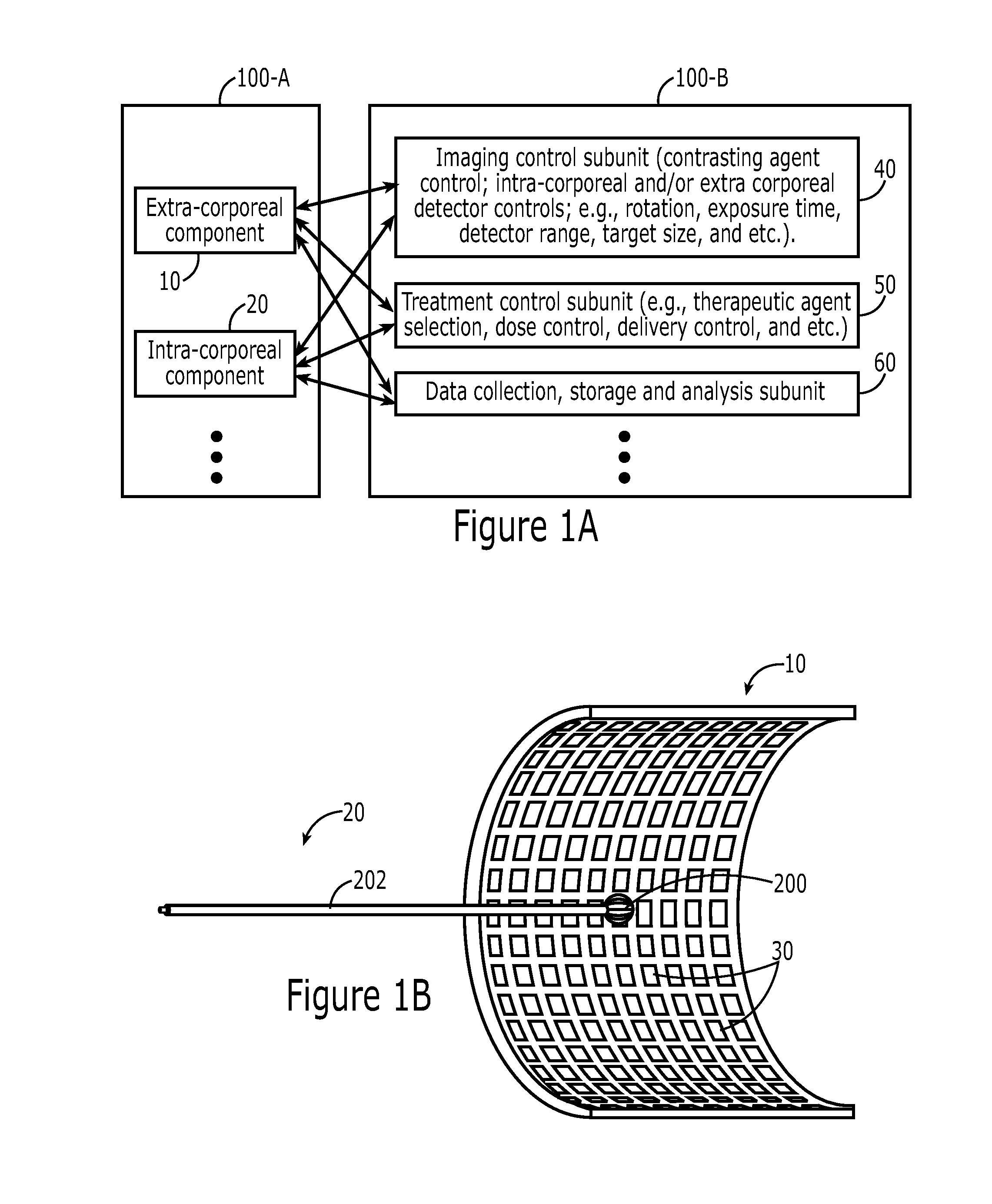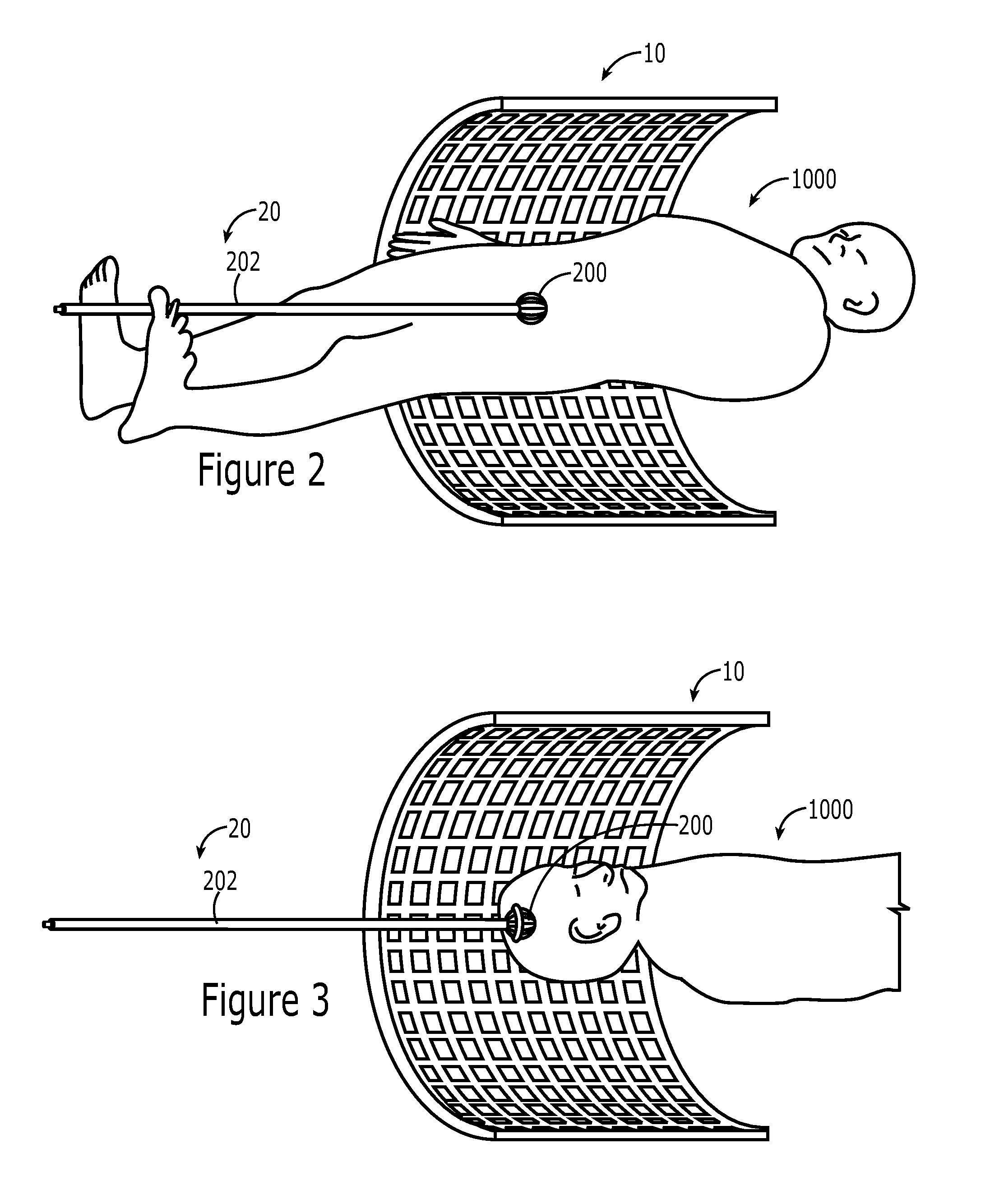Realtime imaging and radiotherapy of microscopic disease
a radiotherapy and microscopic disease technology, applied in the field of real-time imaging and radiotherapy of microscopic disease, can solve the problems of more normal tissue at risk of collateral damage, difficult to detect and target for treatment, and difficult to achieve the effect of improving the prognosis, facilitating treatment, and reducing the risk of missing the targ
- Summary
- Abstract
- Description
- Claims
- Application Information
AI Technical Summary
Benefits of technology
Problems solved by technology
Method used
Image
Examples
example 1
Miniature X-Ray Tube Characteristics
[0090]Figure A displays the photon spectrum in 5 cm of air, 1.5 cm of water, and 5 cm of water from the source operated at 50 kVp; note the substantial hardening of the beam with distance and bolus. The depth dose characteristics are illustrated in figure B for the source operated at 20 kVP and at 50 kVp with or without bolus. These data suggest that via collimation, filtration, and / or energy modulation, treatment conformation to the desired volume is possible.
example 2
Relative Biological Effectiveness (RBE) of the Source
[0091]We have measured preliminary RBEs of the x-rays from the source using U87MG human glioblastoma multiforme (GBM) and MCF7 human breast cancer cells in a standard clonogenic survival assay method. Compared to cobalt-60 irradiation for 10% survival, the RBEs are 1.3 and 1.8, respectively. (FIG. 9D) Even with a highly radioresistant GBM cell line, we show an RBE value greater than 1. The high surface dose deposition and >1 RBE of orthovoltage x-rays has always been a hindrance for EBRT of non-superficial tumors, but they become a clear advantage for the Axxent system in managing disease interstitially, intracavitarily, and intraoperatively. Sparing of normal tissues can be achieved by the rapid depth-dose fall-off (FIGS. 9B & 9C). Use of iodine for dose enhancement in the tumor and dose reduction in the normal tissue should further improve the therapeutic ratio; this study is still currently in progress.
[0092]Characterization da...
example 3
A Pilot Ambi-Cranial PET System for GBM Surgery Guidance: Characterization and Analysis
I. Introduction
[0093]Gliobastoma multiforme (GBM) is the most common and most aggressive malignant primary brain tumor in humans. GBMs are distinguished by extensive and diffuse infiltration of tumor cells into the dense network of interwoven neuronal and glial processes rendering these tumors extremely difficult to excise without large concomitant areas of normal brain.
[0094]To best identify and excise tumor during the surgical operation, many image-guided systems have been introduced, such as a stereotactic navigation system (SNS) that combines a microscope with a tracking system and the use of pre-operative MRI images to relay the 3D location of the scalpel relative to the tumor and brain structures in real-time. However, both systems suffer from brain-shift during and following removal of the gross tumor mass. Intraoperative MRI systems are costly and require MRI-compatible surgical instrument...
PUM
 Login to View More
Login to View More Abstract
Description
Claims
Application Information
 Login to View More
Login to View More - R&D
- Intellectual Property
- Life Sciences
- Materials
- Tech Scout
- Unparalleled Data Quality
- Higher Quality Content
- 60% Fewer Hallucinations
Browse by: Latest US Patents, China's latest patents, Technical Efficacy Thesaurus, Application Domain, Technology Topic, Popular Technical Reports.
© 2025 PatSnap. All rights reserved.Legal|Privacy policy|Modern Slavery Act Transparency Statement|Sitemap|About US| Contact US: help@patsnap.com



